Search Images
Browse Content (p. 1387)
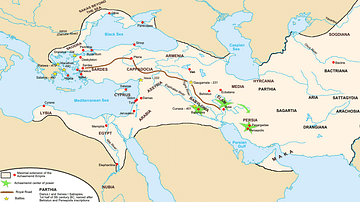
Image
Persian Royal Road
Map of the Persian Royal Road from Susa to Sardes.
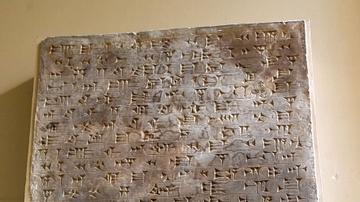
Image
Assyrian Door-sill
The cuneiform inscription gives the name and genealogy of Adad-nirari III (reigned 810-783 BCE) and was written in doorways of a palace built during his reign. Assyrian, 9th-8th centuries BCE. From Nimrud (ancient Kalhu, Mesopotamia), Upper...
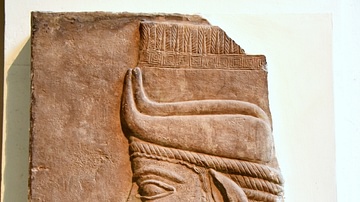
Image
Assyrian Winged-bull Head
This fragment of a human-headed winged-bull, from Tiglath-pileser III's palace, is carved in low-relief like a wall panel. There is a marked contrast with the colossal figures in very high relief, of both earlier and later periods. Assyrian...
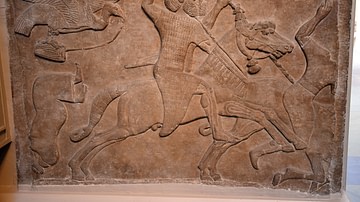
Image
Assyrian Battle Scene
Assyrian relief, from the Central Palace at Nimrud (ancient Kalhu), Mesopotamia, modern-day Iraq; reused later in the South-West Palace, from the reign of Tiglath-Pileser III, c. 728 BCE. An enemy horseman is ridden down by a pair of a armored...
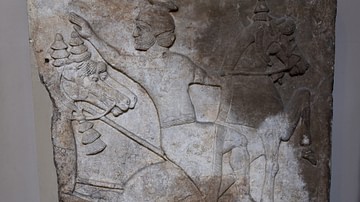
Image
Surrender of Horseman, Assyrian Relief
Assyrian relief, from the Central Palace at Nimrud (ancient Kalhu), Mesopotamia, modern-day Iraq, reused later in the South-West Palace, from the reign of Tiglath-Pileser III, c. 728 BCE. This scene, with a fleeing enemy horseman turning...
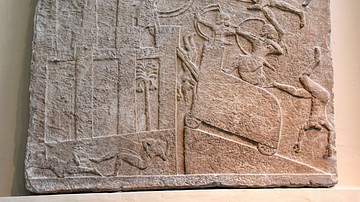
Image
Babylonian City under Assyrian Siege
Assyrian relief showing a siege, from the Central Palace at Nimrud (ancient Kalhu), Mesopotamia, Iraq. Date palms indicate that the city, most of which was on an adjacent slab, was probably Babylonia. The Assyrians have built a siege ramp...
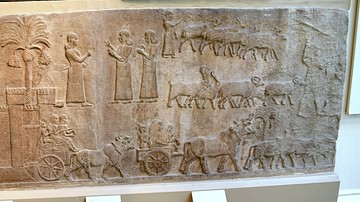
Image
Assyrian Deportation of People
Assyrian relief, from the Central Palace at Nimrud (ancient Kalhu), Mesopotamia, Iraq. This is one of a series of panels that showed Tiglath-Pileser III's military campaigns in modern-day southern Iraq. On the left is a captured town, with...
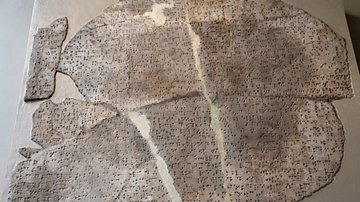
Image
Door Slab from the Central Palace, Nimrud
These cuneifrom inscriptions describe some of the military campaigns of the Assyrian king Tiglath-pileser III (reigned 744-727 BCE) and were probably first placed in a doorway of the Central Palace built by this King at Nimrud. Assyrian...
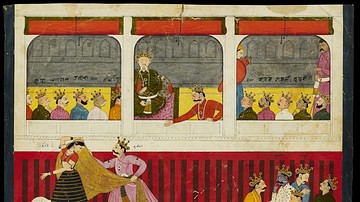
Image
Draupadi Humiliated, Mahabharata
An 18th century CE miniature depicting a famous scene from the Mahabharata in which Draupadi is humiliated in the court of Duryodhan during the struggle for the control of Indraprastha.

Image
Karna in the Kurukshetra War
A watercolur painting on cloth depicting Karna, leader of the Kauravas during the Kurukshetra war as recounted in the epic Mahabharata.